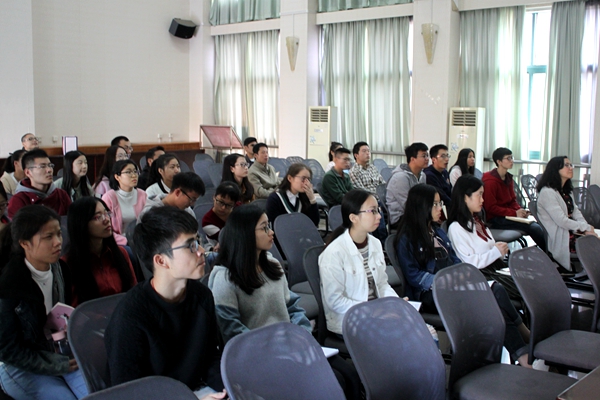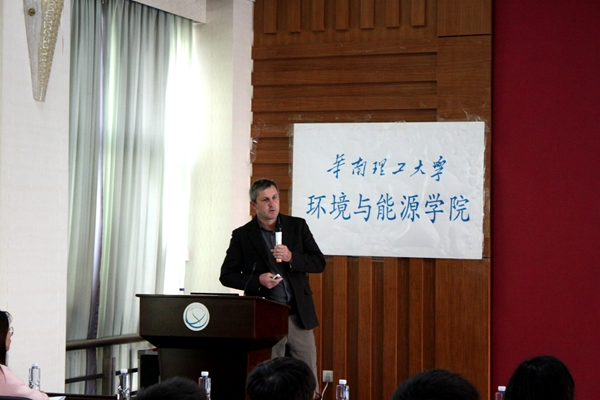

2017年12月5日上午10:30-11:30,由阿德莱德大学生物学院生态与环境科学系的研究员Dr Luke Mosley主讲的学术报告会在B4-215进行。学院部分老师、博士生和硕士生研究生50余人参加了报告会。报告题目为《干旱对土壤及水体中金属活性及迁移的影响(Effects of drought on metal availability and transport in soil and water)》

报告的主要内容为:
Droughts are increasing in many regions of the world due to climate change. Australia recently experienced its worst drought in recorded history, the “Millennium Drought” between 2001 to 2010. Substantial reductions in ground and surface water levels occurred during the drought in the Murray-Darling Basin, Australia’s largest and most important river system. This exposed sediments and soils containing the reduced iron sulfide mineral pyrite (FeS2) to air. The oxidation of pyrite generates sulfuric acid, and the resultant soil and groundwater acidification (pH<4) mobilised metal(loid)s such as Al, As, Mn, Ni, Zn. When these soils were rewet, large amount of acidity were transported into surface water bodies, resulting in acidification over large areas. Post-drought recovery of the acidic system has been slow in many locations. Field and laboratory research has linked this to the insufficient availability of organic matter to drive microbial reduction reactions, which can consume protons and neutralise the acidity.
The drought also disrupted the delivery of suspended and dissolved material from catchments to the river. When the drought ended, large amounts of organic matter was mobilised, the breakdown of which resulted in deoxygenation over hundreds of km of the river system. This mobilised redox-sensitive metals such as Fe and Mn.
The increasing availability of metals during droughts poses risks to aquatic ecosystems and water supplies. Some of the large management challenges that were faced by government agencies and water supply companies during the Millennium Drought will be discussed.

Dr Luke Mosley精彩的报告会,让在座的老师和学生了解了干旱对土壤及水体中金属活性及迁移的影响的应对策略,为科研的展开提供了新的思路。报告会在大家热情的掌声中结束。
图文|团总支、研分会信息中心




